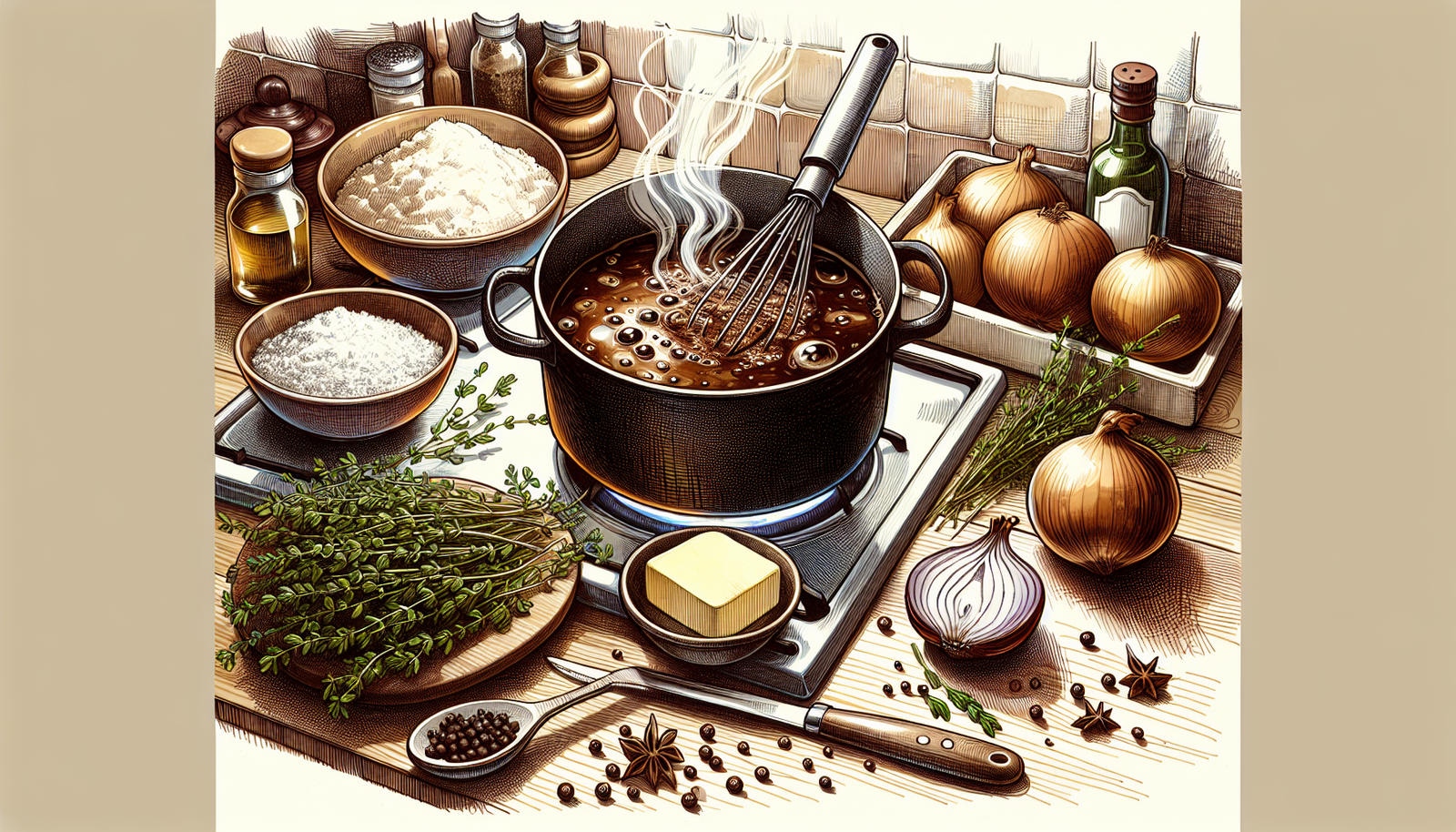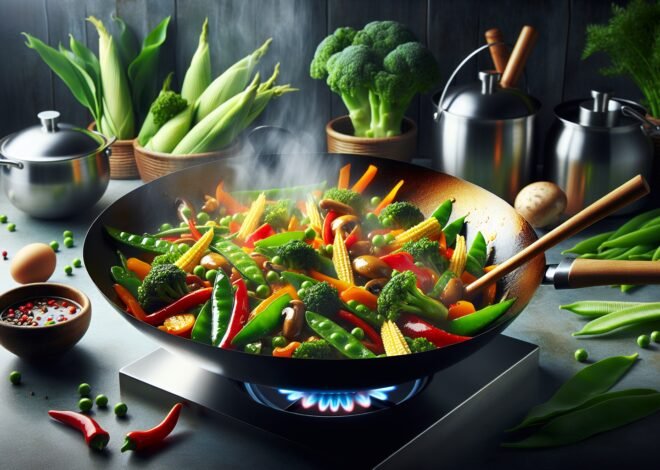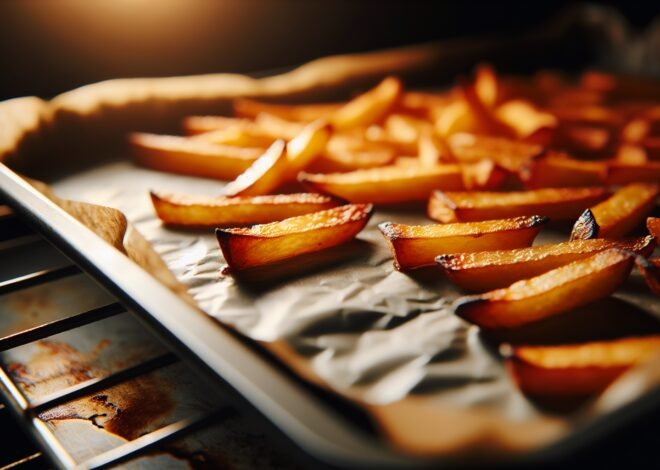
How to Make a Rich and Bold Gravy from Scratch
Make homemade gravy to enhance your meals with a rich and bold flavor that store-bought versions simply can’t match. In this guide, you’ll discover how to craft a robust gravy from scratch, creating an essential component for any memorable feast. By utilizing basic ingredients and techniques, you can bring warmth and satisfaction to your dining table, impressing guests with both flavor and presentation. Join us as we uncover the secrets to achieving a perfectly smooth consistency, all while infusing your creations with depth and complexity. Dive in to elevate your culinary skills and transform any meal into a comforting delight.
How to Make Homemade Gravy from Scratch
Creating homemade gravy from scratch is a rewarding culinary adventure. It adds a personal touch to meals, enhancing flavors with its rich taste. Whether drizzled over mashed potatoes or paired with a roast, homemade gravy can transform any dish. This guide will walk you through the essentials of making gravy, ensuring your end product is delicious and satisfying.
Essential Ingredients for Perfect Gravy
To achieve the perfect gravy, start with quality ingredients. Here’s a list of essential components that will lay the foundation for a flavorful sauce:
- Fat and Drippings: The cornerstone of any great gravy, typically sourced from roasted meats like chicken, turkey, or beef.
- Flour: Used as a thickening agent, it combines with fat to form a roux.
- Broth or Stock: Adds depth and richness. Choose chicken, beef, or vegetable, depending on your dish.
- Seasonings: Salt, pepper, and other spices enhance the taste. Consider adding garlic or onion powder for extra flavor.
- Optional Enhancers: Incorporate wine, cream, or butter for a luxurious touch.
These ingredients form the base, allowing for creativity in flavor profiles. Always taste and adjust as needed.
Step-by-Step Guide to Making Gravy
Crafting homemade gravy is simple once you understand the process. Follow these steps to ensure success:
- Collect Drippings: After roasting your meat, pour the drippings into a pan. Skim off excess fat, leaving about 1/4 cup.
- Make a Roux: Heat the reserved fat in a pan over medium heat. Add an equal amount of flour, whisking until golden brown.
- Add Liquid: Gradually pour in broth or stock, whisking continuously to avoid lumps. Bring to a boil, then reduce heat to simmer.
- Season: Add your chosen spices and seasonings. Taste and adjust salt and pepper as needed.
- Simmer and Thicken: Allow the gravy to simmer until it reaches the desired consistency.
- Strain and Serve: For a smooth texture, strain the gravy through a fine sieve before serving.
This process results in a flavorful, thick gravy perfect for any meal.
Common Mistakes to Avoid When Making Gravy
Even experienced cooks can stumble upon common pitfalls. Avoid these mistakes to ensure your gravy turns out perfectly every time:
- Skipping the Roux: Failing to properly thicken can result in a watery sauce.
- Ignoring Lumps: Always whisk consistently to prevent clumps from forming.
- Over-Seasoning: Start with a small amount of salt and adjust gradually.
- Not Straining: Straining ensures a smooth finish, free of lumps or unwanted bits.
- Using Low-Quality Stock: Invest in a good-quality broth for richer flavors.
By steering clear of these errors, you’ll achieve a velvety and flavorful gravy every time.
Tips for a Rich and Bold Gravy
A rich and bold gravy can elevate any dish, making it memorable. Here are some expert tips to amp up the flavor and texture of your homemade gravy, ensuring it stands out as a centerpiece of your meal.
Using Drippings for Flavorful Gravy
Drippings hold the essence of the roasted meat, offering unparalleled flavor. Here’s how to make the most of them:
- Roast with Intention: Use aromatics like onions and garlic under your meats to enhance drippings.
- Collect Carefully: Pour drippings from the roasting pan, scraping up browned bits for added flavor.
- De-fat as Needed: Skim excess fat, but retain enough to create a rich base for your roux.
- Enhance with Broth: Combine drippings with a high-quality broth to deepen flavors.
These methods harness the full potential of drippings, producing a robust and savory gravy.
Adjusting Consistency for Ideal Gravy Thickness
The perfect gravy has just the right thickness. Here’s how to adjust it to your liking:
- Use Cornstarch: Mix with cold water and add to simmering gravy for a quick thickening fix.
- Simmer Longer: Allow gravy to reduce over low heat if it’s too thin.
- Add More Liquid: If the gravy is too thick, whisk in additional broth or water.
- Test with a Spoon: Dip a spoon into the gravy. If it coats the back smoothly, it’s ready.
These adjustments ensure your gravy meets your texture preferences, whether silky smooth or slightly thicker.
Enhancing Gravy with Herbs and Spices
Gravy can be a canvas for bold flavors. Enhance yours with these herb and spice suggestions:
- Thyme and Rosemary: These herbs pair beautifully with poultry gravies.
- Sage: Ideal for a warm, aromatic touch, especially in turkey gravy.
- Black Pepper and Nutmeg: Add a hint of spice and warmth.
- Fresh Herbs: Stir in chopped parsley or chives for a burst of freshness.
Experiment with different combinations to create a unique signature gravy that complements your dish.
Variations and Serving Suggestions for Homemade Gravy
Once you’ve mastered the basics, it’s time to explore variations and serving ideas. Homemade gravy is versatile, offering options for different dietary needs and pairing possibilities. Let’s look at how to diversify your gravy-making skills.
Making Vegan and Vegetarian Gravy Options
Catering to all dietary preferences is easy with these vegan and vegetarian gravy ideas:
- Use Vegetable Stock: A robust vegetable broth forms the base.
- Incorporate Plant-Based Fats: Choose olive oil or vegan butter to create the roux.
- Add Umami Flavors: Soy sauce or nutritional yeast can mimic the depth found in meat-based gravies.
- Thicken with Alternatives: Cornstarch or arrowroot powder work well as thickening agents.
These plant-based options ensure everyone at the table can enjoy delicious, homemade gravy.
Pairing Gravy with Different Dishes
Gravy isn’t just for mashed potatoes. Here are some creative pairings:
- Roasted Vegetables: Drizzle over carrots, parsnips, or Brussels sprouts for added richness.
- Savory Pies: Enhance pot pies or shepherd’s pie with a generous gravy pour.
- Breakfast Staples: A touch of gravy on biscuits or hash browns elevates the meal.
- Pasta: Use as a sauce for a comforting twist on traditional noodles.
These pairings highlight gravy’s versatility, making it a go-to addition for various cuisines.
Storing and Reheating Gravy Without Losing Flavor
Proper storage and reheating ensure your gravy stays delicious. Follow these tips:
- Refrigerate Promptly: Store gravy in airtight containers in the fridge for up to three days.
- Freeze for Later: Place in freezer-safe bags, laying them flat for easy thawing.
- Reheat Slowly: Warm on the stove over low heat, stirring frequently to maintain consistency.
- Revive with Fresh Seasonings: A sprinkle of fresh herbs can reinvigorate reheated gravy.
These methods keep your homemade gravy tasting fresh, ensuring every meal is as delightful as the first.
Conclusion
Homemade gravy is made by combining pan drippings from cooked meat with flour or cornstarch and liquid like broth. Start by whisking the flour or cornstarch into the drippings over medium heat to create a roux. Gradually add the broth while continuously whisking to prevent lumps and ensure a smooth mixture. Season with salt, pepper, and herbs for added flavor. Allow the gravy to simmer until thickened to the desired consistency.
FAQ
How do you make homemade gravy from scratch without drippings?
Start by melting butter in a saucepan, then whisk in flour to form a roux. Gradually add broth or stock, stirring continuously until the gravy thickens. Season with salt, pepper, and herbs like thyme or rosemary for flavor.
What are the best thickeners for homemade gravy?
Flour and cornstarch are popular choices. Flour provides a rich texture, while cornstarch offers a glossy finish. Tapioca starch and arrowroot powder also work well, especially for gluten-free options.
Can you make gluten-free homemade gravy?
Yes, use cornstarch or arrowroot powder instead of flour. Ensure your broth is gluten-free, and follow the same process as traditional gravy. This swaps the thickener without compromising flavor or texture.
How can I add more flavor to my homemade gravy?
Enhance flavor with herbs like sage or thyme. Add a splash of soy sauce or Worcestershire sauce for umami. Sautéed onions or garlic can also bring depth to the gravy.
What is the best way to store and reheat homemade gravy?
Store in an airtight container in the refrigerator for up to three days. Reheat gently on the stovetop, whisking to restore smoothness. Add a splash of broth if it becomes too thick.
How do you make homemade gravy with turkey drippings?
Collect drippings from the roasting pan, then skim off excess fat. Use the remaining liquid as a base, whisking in flour to thicken. Add broth if needed and season to taste with salt and pepper.











